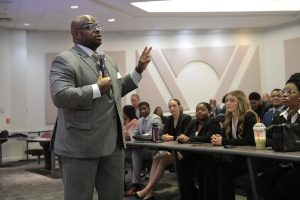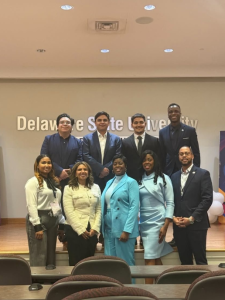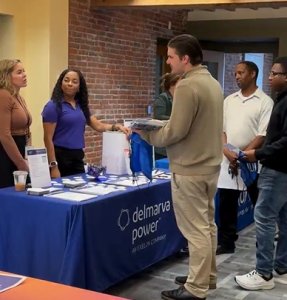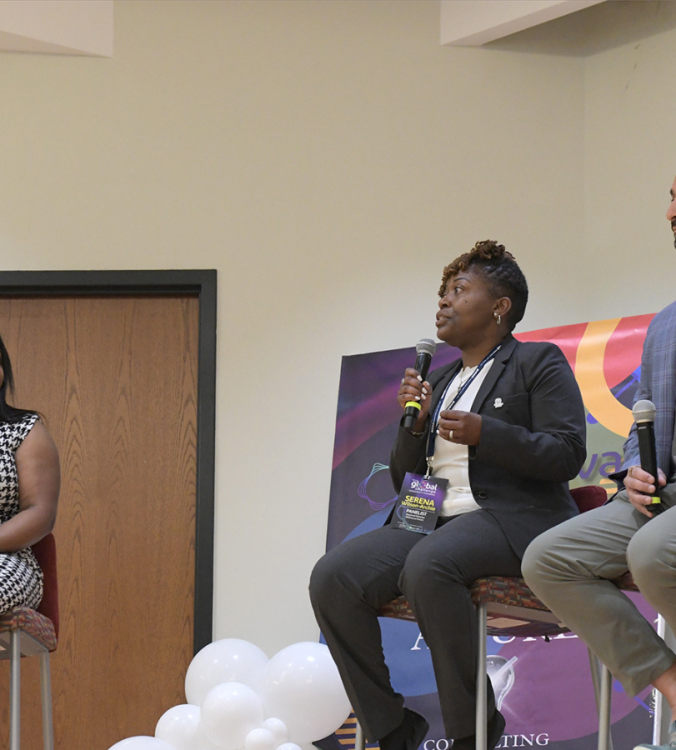The energy sector has always been about connection: connecting communities to power, connecting innovation to progress, and connecting today’s investments to tomorrow’s possibilities. At Delmarva Power, we’ve discovered that our most meaningful connections aren’t just about electricity flowing through power lines. They’re about the human connections we’re building with students at Delaware State University (DSU) and the University of Maryland Eastern Shore (UMES), where we’re not just investing in education, but in the future leaders who will reshape the energy landscape.
More Than Just Scholarships

We knew, when engaging with Historically Black Colleges and Universities (HBCU) in Delaware and Maryland, that we wanted to do something different. Traditional corporate giving often feels transactional, but as we sat with students, faculty, and administrators, we realized that real transformation requires something deeper. That’s how the Delmarva Power Scholars Program was born — not as another scholarship initiative, but as a comprehensive journey that follows students from their sophomore year through their first steps into professional careers.
Our DSU and UMES scholars aren’t just receiving financial aid through our investments. They’re future engineers and innovators who spend their summers working alongside our teams, learning the intricacies of power generation and grid management. When they graduate, they don’t just have a degree; they have three years of real-world experience and a network of mentors who’ve watched them grow.
Innovation as a Catalyst for Change

We’ve also launched the Delmarva Power Global Challenge, which brings together HBCU students from across the Northeast to tackle real-world problems through social entrepreneurship and sustainable innovation.
Students collaborate across universities, developing solutions that address everything from energy access in underserved communities to sustainable business models for renewable energy deployment. Last year, a team proposed a community-owned solar cooperative model that we’re now studying for potential pilot implementation.
Innovation Day at DSU serves a similar purpose with a hands-on approach. The program encourages students to move beyond theoretical concepts and build actual prototypes. Walking through the exhibition feels like glimpsing into the future, with students demonstrating energy storage solutions they’ve built in their dorms and presenting mobile apps that could optimize residential energy usage.
Building Infrastructure for Success
Real change requires the right tools and resources, including new academic infrastructure. We didn’t just buy equipment; we created ecosystems for innovation. The new Internet of Things (IoT) resources — including sensors, drones, and edge computing platforms —give students hands-on experience with the same technologies they’ll use in their careers.
During a recent visit, we watched students use the new drone technology to conduct a mock infrastructure inspection. One student’s senior design project, focused on using AI for predictive maintenance of power lines, has already caught the attention of our engineering department.
We also supported a Cybersecurity Education, Research, and Training Center, which represents another strategic investment. As cyber threats to power grids become more sophisticated, we need professionals who understand both energy systems and cybersecurity. The students training in this center today will be the ones protecting our infrastructure tomorrow.
The Renewable Energy Revolution Starts Here

Perhaps our most transformative investment is the Renewable Energy Education Center at DSU. Students receive hands-on training by designing renewable energy systems, analyzing grid integration challenges, and developing solutions for energy storage and distribution using the same software and modeling tools used by professional engineers.
The program’s impact extends beyond individual students. Faculty members are conducting research that informs our own renewable energy initiatives, and when students graduate from this program, they’re ready to lead the industry’s transformation.
Our overarching HBCU partnerships represent more than $1.8 million in total investment, but the numbers only tell part of the story. The real measure of success is found in individual stories: the first-generation college student who lands an internship that changes their career trajectory; the aspiring engineer who develops a prototype that could revolutionize energy storage; the business student who creates a startup focused on energy equity.
These partnerships have taught us that diversity isn’t just a moral imperative — it’s also a business necessity. The challenges facing the energy industry are too complex to be solved by any single perspective. We need the creativity of students who see problems differently and the innovation of minds that haven’t been constrained by “how things have always been done.”
When we walk across the campuses of DSU and UMES today, we see the future leaders of the energy industry, the innovators who will solve tomorrow’s challenges, and the professionals who will ensure that reliable, affordable, and clean energy reaches every community we serve. This is more than corporate social responsibility: it’s a strategic partnership-building that recognizes the interconnected nature of education, workforce development, and industry success.

